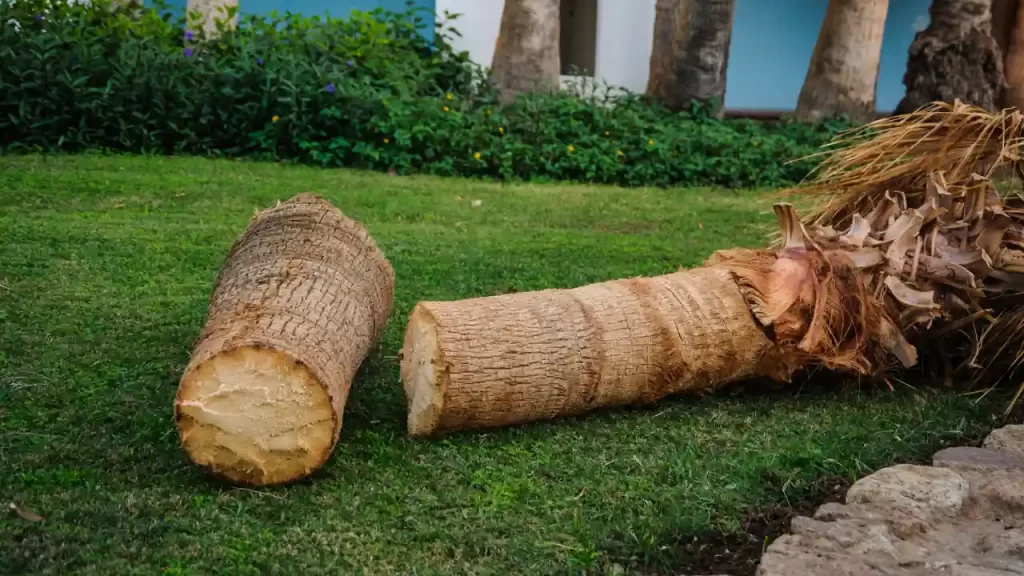How to Remove a Palm Tree?
Removing a palm tree is frequently a required decision motivated by a variety of considerations such as safety concerns, landscape changes, or tree health difficulties. Understanding the palm tree removal procedure and factors is critical for a successful and safe conclusion. This article will give insights into the complexities of palm tree removal by covering important features and concerns.
The significance of professional palm tree removal
Professional palm tree removal is more than just chopping down a tree; it is a specialized process that demands experience and precision. Certified arborists have the expertise and abilities to assess tree health, detect possible hazards, and safely remove trees. Using specialists assures not only effective removal but also reduces dangers and any harm to nearby structures or landscapes.
Their knowledge considerably decreases the hazards connected with do-it-yourself removal attempts, highlighting the significance of enlisting professional assistance for such activities.
Understanding Different Palm Tree Species
Understanding the many palm tree species is critical when contemplating removal options. Different species have distinct traits, growth patterns, and sizes. The magnificent Date Palm (Phoenix dactylifera), the renowned Canary Island Date Palm (Phoenix canariensis), and the exquisite Queen Palm (Syagrus romanzoffiana) are all common palm kinds. Each species has various leaf structures, heights, and trunk forms, which influence their beauty and growth patterns. Recognizing these variances assists in the development of specialized eradication techniques. Different species may have different root systems or wood densities, which influences how trees are removed. Understanding the characteristics of different palm tree species allows for optimal planning for their safe and efficient removal.
Tools Required for Palm Tree Removal
Efficiently removing a palm tree demands specific tools tailored for the task. Here are essential tools necessary for a successful palm tree removal:
Chainsaw: Ideal for cutting through the trunk and branches of the palm tree.
Pruning Shears or Loppers: Essential for trimming smaller branches and fronds.
Safety Gear: Includes gloves, eye protection, a hard hat, and sturdy boots for personal safety.
Ropes and Harnesses: Essential for controlled lowering or rigging branches while dismantling the tree.
Climbing Gear: If climbing is required, harnesses, ropes, and climbing spikes ensure safety and stability.
Ladder or Elevated Platforms: For access to higher parts of the tree during trimming or removal.
Axe or Hatchet: Useful for cutting and splitting larger branches or trunks, if necessary.
Wood Chipper or Mulcher: For processing and recycling tree parts post-removal.
Heavy-Duty Truck or Trailer: For transporting the removed tree parts for disposal or recycling.
How to remove a palm tree?
Step-by-Step Guide for Palm Tree Removal
Begin by examining the palm tree’s health. Look for evidence of sickness, degradation, or instability. Determine whether the tree is a danger to structures or people.
Prioritize safety measures. Wear adequate safety equipment, such as gloves, eye protection, a hard helmet, and sturdy boots. Clear the space surrounding the tree and secure it to avoid accidents.
Based on the size, position, and surroundings of the tree, choose the most appropriate removal approach. Straight felling and sectional disassembly are two techniques that can be used.
Remove any obstructions or anything around the palm tree that might impede the removal procedure or represent a risk during cutting or falling branches.
Begin by pruning the palm fronds from the bottom up. Remove smaller fronds using pruning shears or loppers and bigger ones with a chainsaw.
For straight felling, create a horizontal incision (notch) on the side where the tree should fall. Sectional disassembly requires cutting the tree into manageable portions from top to bottom.
If straight felling, make sure the tree’s fall direction is safe and controllable. To avoid harm, guide the tree’s descent with ropes or a winch.
Once the tree has been down, use a chainsaw to chop the remaining stump close to the ground. Remove any leftover debris or projecting roots.
Clear the area of any tree bits and rubbish. As per local legislation, properly dispose of or recycle the removed tree portions.
Examine the area to confirm that there are no leftover threats or damages. If required, replant or landscape the area.
Following these stages assures a thorough and safe palm tree removal operation, although bigger or riskier removals must be handled by specialists. Throughout the process, safety, accuracy, and respect to local requirements are crucial.
Risks of Do-It-Yourself Palm Tree Removal
Without competent assistance, removing palm trees carries major hazards. Inexperienced persons attempting DIY removal may confront a variety of problems. Improper procedures or inadequate equipment utilization can result in mishaps such as falling branches, personal injuries, or property damage. Mishandling chainsaws or climbing without sufficient safety equipment raises the danger of serious accidents. Furthermore, misjudging the tree’s falling direction or failing to manage the descent might cause harm to neighboring structures or landscapes. DIY methods may potentially result in partial clearance, leaving dangerous stump remains or ugly debris. Engaging trained arborists mitigates these hazards by assuring safe and fast palm tree removal while prioritizing personnel safety and property protection.
Considerations for Palm Tree Removal Prices
The cost of palm tree removal varies depending on a number of factors. The cost of removing a tree is affected by its size, location, accessibility, and intricacy. Smaller palm trees with better access usually have cheaper removal charges, which range from $300 to $1,500. Larger trees or those in tight places, on the other hand, may cost $1,500 to $3,000 or more. Other variables influencing expenses include the necessity for specialized equipment, disposal fees, and any required licenses. The prices of professional arborists are also included in the whole costs. Using licensed arborists provides skill and rapid removal, justifying a higher upfront cost but reducing dangers and potential additional expenditures from DIY mistakes.
Related Posts:
Benefits of Hiring Certified Arborists
Hiring qualified arborists for palm tree removal has several benefits. These experts have specific knowledge, skills, and the necessary equipment to perform removals with accuracy and safety. Certified arborists undertake detailed examinations to determine the best removal strategies for particular trees. Their experience assures adherence to safety standards and local rules, reducing the likelihood of accidents or property damage. Furthermore, engaging professionals ensures quick disposal while reducing harm to the environment and removing hazards connected with DIY initiatives. Certified arborists also offer post-removal services such as stump grinding and debris cleanup, assuring a thorough and trouble-free removal operation. Hiring experienced arborists is a wise choice for effective and safe palm tree removal due to their skill and complete approach.
FAQS
How can I assess if my palm tree needs removal?
Look for signs like decay, instability, or disease. Consulting a certified arborist can provide a professional assessment.
Is DIY palm tree removal advisable?
DIY removal poses risks. Engaging professionals ensures safety, expertise, and compliance with regulations.
What are the potential risks of DIY palm tree removal?
Risks include accidents, injuries, property damage, incomplete removal, and unsightly debris.
Are permits necessary for palm tree removal?
Depending on local regulations, permits might be required. Check with local authorities before removal.
What factors influence the cost of palm tree removal?
Tree size, location, accessibility, equipment needs, disposal fees, and professional service charges affect costs.
Conclusion
Removing a palm tree takes meticulous preparation, safety precautions, and experience. DIY projects include the danger of mishaps and incomplete removal. Using licensed arborists assures safe and effective removal, risk mitigation, and complete services. Consider the tree’s health, financial issues, and safety first. Making an informed decision, whether DIY or professional aid is used, guarantees successful palm tree removal while protecting personal safety and property.




